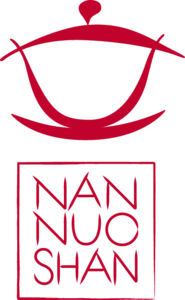
While one may have to be fairly into tea to be interested in such a specific comparison, some of the differences here should even be detectable to complete novices, so we hope you've enjoyed the (somewhat rare) opportunity to do a horizontal tasting between the same type of tea in different grades. Since you already know that type of tea—the Taiwanese, bug-bitten oolong Dong Fang Mei Ren, often anglicised as 'Oriental Beauty'—let's get straight to the reveal!
Tea #1: Dong Fang Mei Ren — €44/50g
- Meaning: 'eastern beauty'
- Origin: Emei Township, Hsinchu County, Taiwan
- Cultivar: Qingxin Da Mou
- Harvest Time: May 2021
Balanced in its mouthfeel and its flavor, a woody note, as of fresh spring twigs, is uplifted by a hint of honey sweetness and heady florality. It's a respectable example of the type, and for that reason was selected for our shop in larger quantities.
Tea #2: Dong Fang Mei Ren — €65/50g
- Meaning: 'eastern beauty'
- Origin: Emei Township, Hsinchu County, Taiwan
- Cultivar: Qingxin Da Mou
- Harvest Time: May 2021
Pretty clearly the outlier of the group, and in a positive way, both the wet leaves and the infusion have the bouquet of a bouquet: the scent of stepping into a flower shop to be met with hundreds of pungent and heady flowers. The thin, delicate mouthfeel with a mild sweetness keeps the tea very drinkable, and from the overwhelming richness of quaffing a bottle of perfume.
Tea #3: Dong Fang Mei Ren — €34/50g
- Meaning: 'eastern beauty'
- Origin: Emei Township, Hsinchu County, Taiwan
- Cultivar: Qingxin Da Mou
- Harvest Time: May 2021
Though it shares a fair amount in common with #1, the woodiness is here much more dominant, the florality, a lot more subdued. The infusion is distinctly darker in color as well, and though there is still some sweetness present, there is also a faint bitterness. In its favor, a very slight creaminess sometimes appears in the mouthfeel, which is not unwelcome.
Summary:
However they're brewed, #2 should be fairly distinct from the others, and the difference between #1 and #3 will likely be apparent as well. Though taste is, of course, subjective, the refined bouquet of #2 will likely both be more difficult to produce just so, and be more desirable, leading to a higher price. Whether that price is justified is again subjective, but it could be said that the tea offers everything one looks for in a Dong Fang Mei Ren. On the other hand, #3 doesn't seem to display nearly enough of the florality and honeyed sweetness that production usually bends toward. This doesn't make it intrinsically less valuable, but it's rather not what one seeks when purchasing this type.
There is an uneven step in the price difference between #1 and #3 versus #1 and #2, and this does seem to be reflected in the tastes, as #1 is closer in character to #3 than #2, whereas #2 is almost twice the price of #3! Is it twice as good? If the sublime quality of the experience is what counts to the drinker, than it may be certainly be justified (it will still be less expensive per liter brewed than even a mid-range bottle of wine); otherwise, #1 seems a good compromise. As for guessing the exact prices, that's certainly tricky given the number of factors involved, as examined in this video. Given that Dong Fang Mei Ren is a prestige tea, one consumed inland as well as marketed for foreign trade, and a tea that requires particularly special attention to get just right, very high prices should not be too surprising, though even the least expensive of these three would go for as much as some of the most expensive other oolongs on our shop. Those who used the price of the Dong Fang Mei Ren available in larger quantities (#1), researched the price on other retailers, or who are already longtime Dong Fan Mei Ren connoisseurs might have had a hint of the likely range.
So how did you do? The object of this blind tasting is not, in fact, to guess the exact number, but rather to develop awareness of gradations in quality, and to provoke thought about the economics of tea. Not to mention being able to do a very nice horizontal tasting. Nevertheless, we'd be very interested to hear your guesses, what you thought of the tasting, and which teas you'd find most worth their cost.

